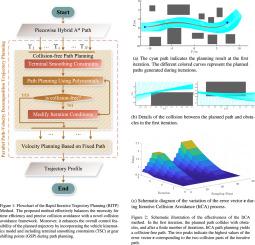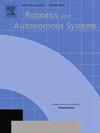A rapid iterative trajectory planning method for automated parking through differential flatness
IF 4.3
2区 计算机科学
Q1 AUTOMATION & CONTROL SYSTEMS
引用次数: 0
Abstract
As autonomous driving continues to advance, automated parking is becoming increasingly essential. However, significant challenges arise when implementing path velocity decomposition (PVD) trajectory planning for automated parking. The primary challenge is ensuring rapid and precise collision-free trajectory planning, which is often in conflict. The secondary challenge involves maintaining sufficient control feasibility of the planned trajectory, particularly at gear shifting points (GSP). This paper proposes a PVD-based rapid iterative trajectory planning (RITP) method to solve the above challenges. The proposed method effectively balances the necessity for time efficiency and precise collision avoidance through a novel collision avoidance framework. Moreover, it enhances the overall control feasibility of the planned trajectory by incorporating the vehicle kinematics model and including terminal smoothing constraints (TSC) at GSP during path planning. Specifically, the proposed method leverages differential flatness to ensure the planned path adheres to the vehicle kinematic model. Additionally, it utilizes TSC to maintain curvature continuity at GSP, thereby enhancing the control feasibility of the overall trajectory. The simulation results demonstrate superior time efficiency and tracking errors compared to model-integrated and other iteration-based trajectory planning methods. In the real-world experiment, the proposed method was implemented and validated on a ROS-based vehicle, demonstrating the applicability of the RITP method for real vehicles.

通过差分平整度实现自动泊车的快速迭代轨迹规划方法
随着自动驾驶技术的不断发展,自动泊车变得越来越重要。然而,在为自动泊车实施路径速度分解(PVD)轨迹规划时会遇到巨大挑战。首要挑战是确保快速、精确的无碰撞轨迹规划,而这往往是相互冲突的。其次是保持规划轨迹的足够控制可行性,尤其是在换挡点(GSP)。本文提出了一种基于 PVD 的快速迭代轨迹规划(RITP)方法来解决上述难题。该方法通过一个新颖的防碰撞框架,有效地平衡了时间效率和精确防碰撞的必要性。此外,它还通过在路径规划过程中结合车辆运动学模型并在 GSP 中加入终端平滑约束(TSC),增强了规划轨迹的整体控制可行性。具体来说,所提出的方法利用差分平整度来确保规划路径符合车辆运动学模型。此外,它还利用 TSC 来保持 GSP 处曲率的连续性,从而提高整体轨迹的控制可行性。仿真结果表明,与模型集成和其他基于迭代的轨迹规划方法相比,该方法具有更高的时间效率和跟踪误差。在实际实验中,所提出的方法在基于 ROS 的车辆上得到了实施和验证,证明了 RITP 方法对实际车辆的适用性。
本文章由计算机程序翻译,如有差异,请以英文原文为准。
求助全文
约1分钟内获得全文
求助全文
来源期刊

Robotics and Autonomous Systems
工程技术-机器人学
CiteScore
9.00
自引率
7.00%
发文量
164
审稿时长
4.5 months
期刊介绍:
Robotics and Autonomous Systems will carry articles describing fundamental developments in the field of robotics, with special emphasis on autonomous systems. An important goal of this journal is to extend the state of the art in both symbolic and sensory based robot control and learning in the context of autonomous systems.
Robotics and Autonomous Systems will carry articles on the theoretical, computational and experimental aspects of autonomous systems, or modules of such systems.
 求助内容:
求助内容: 应助结果提醒方式:
应助结果提醒方式:


